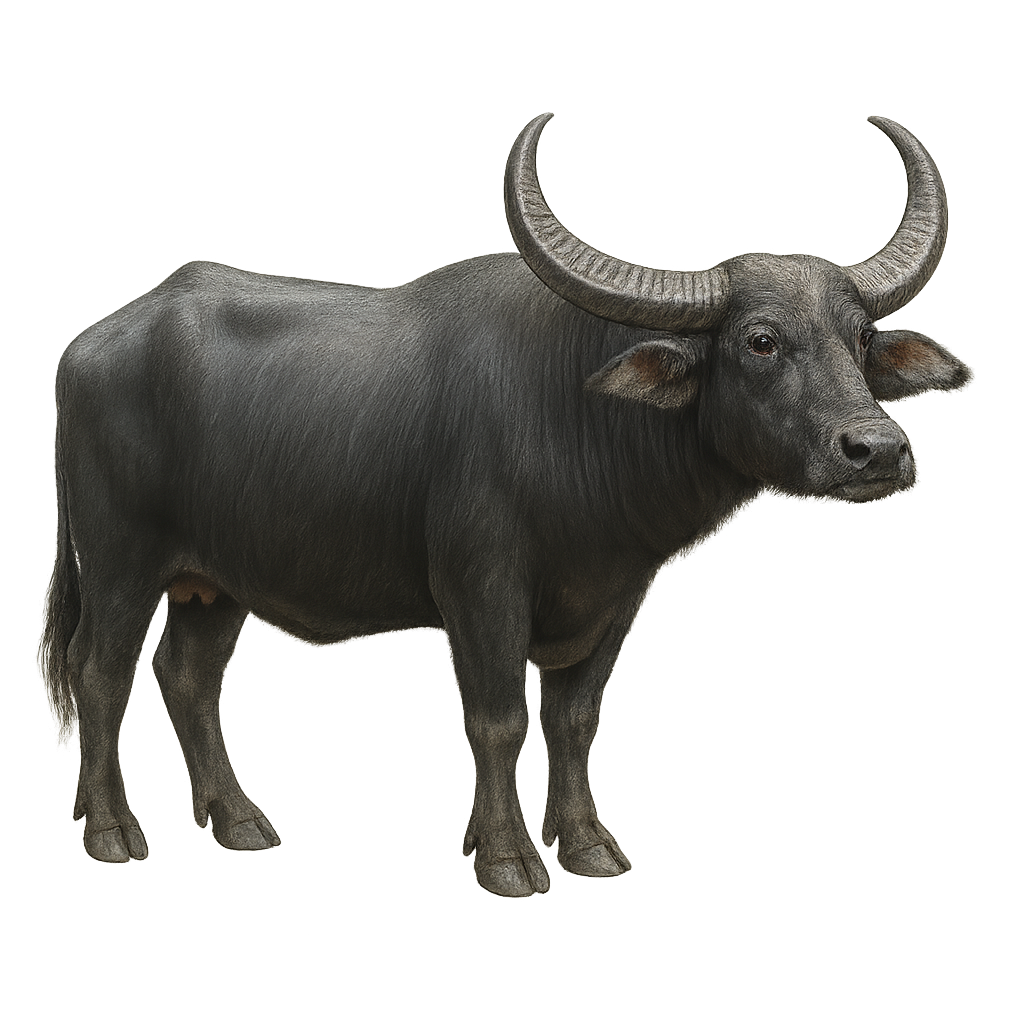Your wildlife photography guide.
Explore the water buffalo in detail, study its behavior, prepare your shots.
Where to observe and photograph the water buffalo in the wild
Learn where and when to spot the water buffalo in the wild, how to identify the species based on distinctive features, and what natural environments it inhabits. The WildlifePhotographer app offers tailored photography tips that reflect the water buffalo’s behavior, helping you capture better wildlife images. Explore the full species profile for key information including description, habitat, active periods, and approach techniques.
Water buffalo
Scientific name: Bubalus bubalis

IUCN Status: Least Concern
Family: BOVIDAE
Group: Mammals
Sensitivity to human approach: Suspicious
Minimum approach distance: 10 m
Rut period: October to November
Gestation: 300-320 jours
Births: July to September
Habitat:
Marshes, rice paddies, wet grasslands
Activity period :
Activity varies depending on season, weather, or human pressure.
Identification and description:
The water buffalo, or Bubalus bubalis, is a large domesticated mammal native to South and Southeast Asia. Known for its robustness and ability to thrive in wet environments like marshes and rice paddies, it has thick skin and distinctive curved horns. Primarily used for agricultural work and milk production, the water buffalo is vital to the rural economy in many regions. It is also valued for its meat. Although domesticated, it retains a suspicious behavior towards humans. Water buffaloes are social animals that live in herds and often move together for protection against predators.
Recommended lens:
400 mm – adjust based on distance, desired framing (portrait or habitat), and approach conditions.
Photography tips:
To photograph the water buffalo, choose early morning or late afternoon when the light is soft. Use a telephoto lens of 400mm or more to capture detailed images from a distance, without disturbing the animal. Be patient and wait for the buffalo to relax in its natural environment. Group scenes are particularly interesting to photograph, as they show the social behavior of the species. Remember to check your exposure, especially in very bright areas like rice paddies.
The WildlifePhotographer App is coming soon!
Be the first to explore the best nature spots, track rutting seasons, log your observations, and observe more wildlife.
Already 1 432 wildlife lovers subscribed worldwide

